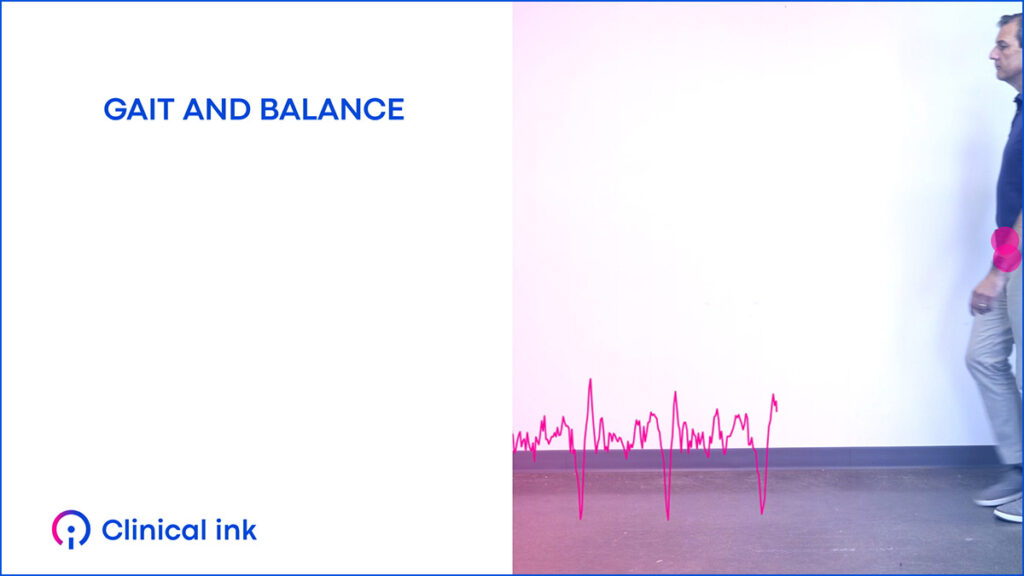Measure Visuomotor Coordination, Balance, and Motor Performance
The Clinical ink Mobile Gait and Balance Assessment measures visuomotor coordination, balance, and motor performance. It utilizes multiple sensors attached to participants to characterize biomechanical movements and identify abnormal walking patterns.1,2
In this task, participants walk at a normal pace along a straight path, back and forth. Walking patterns are recorded from the trunk and wrist.
With the data collected, we can analyze and calculate metrics associated with gait speed, efficiency, and synchronicity, along with other disease-specific features.
Why Measure Gait and Balance?
Gait is sensitive to changes in visuomotor coordination, balance, and motor performance. Diseases affecting brain regions involved in the ability to efficiently maintain their walking pattern, volitionally control their limbs, or safely recognize and avoid hazards in their environment can negatively affect Gait performance. For example, altered Gait performance has been demonstrated in Parkinson’s disease, multiple sclerosis, and amyotrophic lateral sclerosis. 3-5 Using Gait measurements, disease- and treatment-related changes in visuomotor coordination, balance, and motor performance can be estimated.
Discover the Additional Benefits of Clinical ink’s Technology
Learn more about how Clinical ink’s wearable and sensor technologies power the Mobile Gait Assessment, as well as other biomechanical, cognitive, and speech assessments here, or download the Clinical ink Big Brain Book, a digital assessments and endpoints catalog.
Sources:
1. Takeda, R et al (2009). Gait analysis using gravitational acceleration measured by wearable sensors. Journal of Biomechanics, 42, 223-233.
2. Senden, R (2009). Acceleration-based gait test for healthy subjects: Reliability and reference data. Gait & Posture, 30, 192-196.
3. Latt, MD et al (2009). Acceleration patterns of the head and pelvis during gait in older people with Parkinson’s disease: A comparison of fallers and nonfallers. Journal of Gerontology, 64A, 700-706.
4. Spain, RI et al (2012). Body-worn motion sensors detect balance and gait deficits in people with multiple sclerosis who have normal walking speed. Gait & Posture, 35, 573-578.
5. Hausdorff, JM et al (2000). Dynamic markers of altered gait rhythm in amyotrophic lateral sclerosis. Journal of Applied Physiology, 88, 2045-2053.
